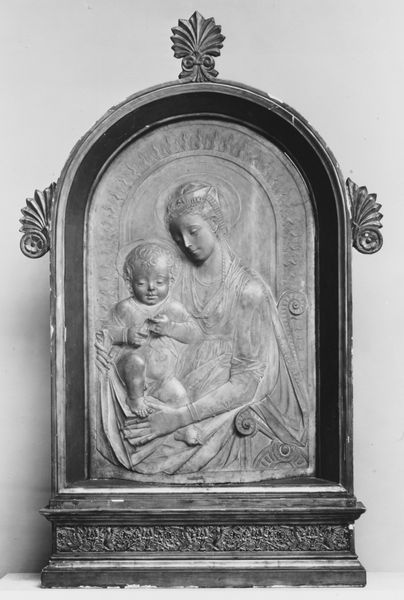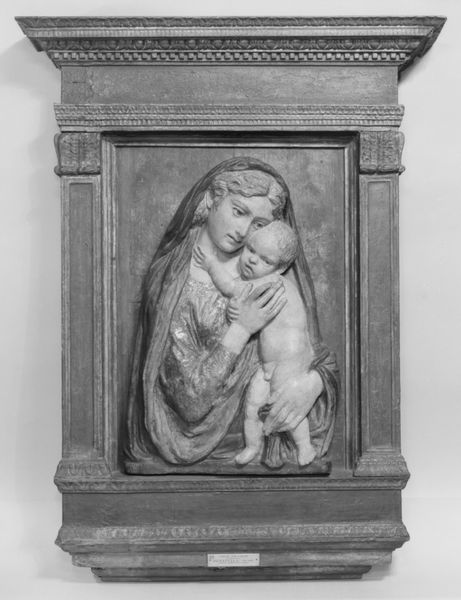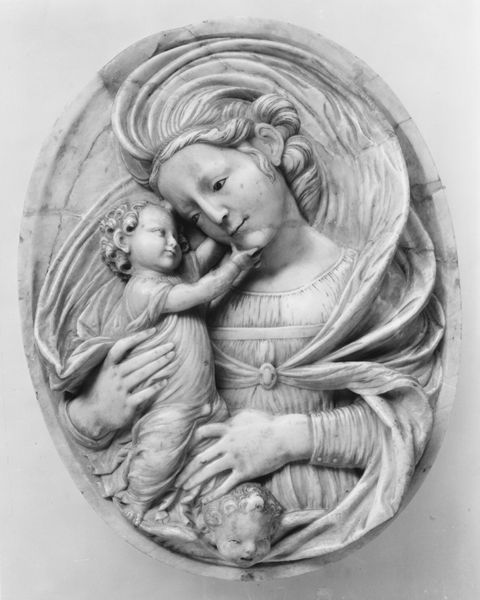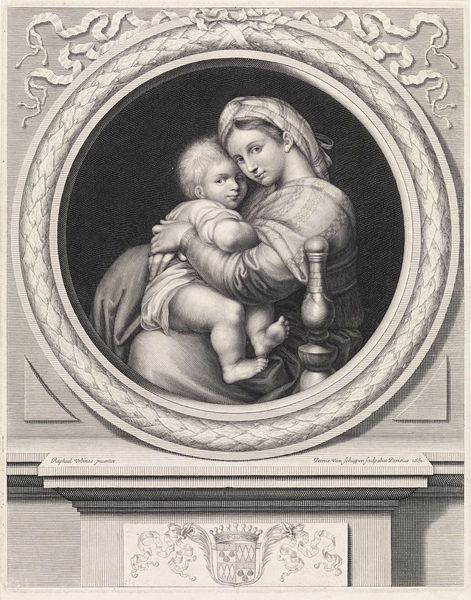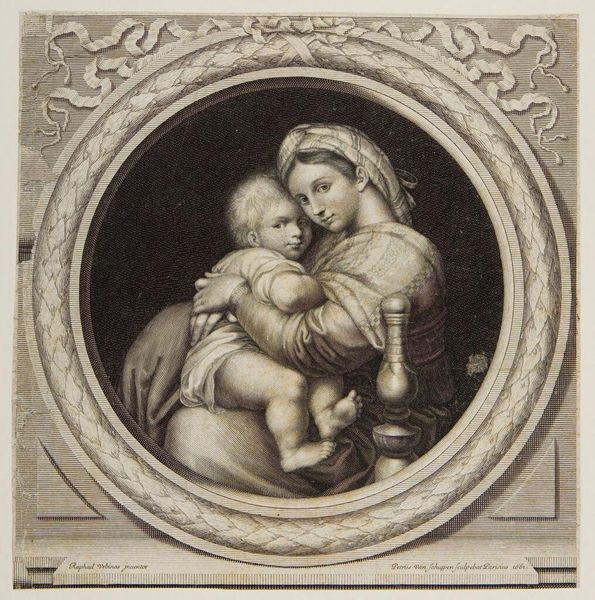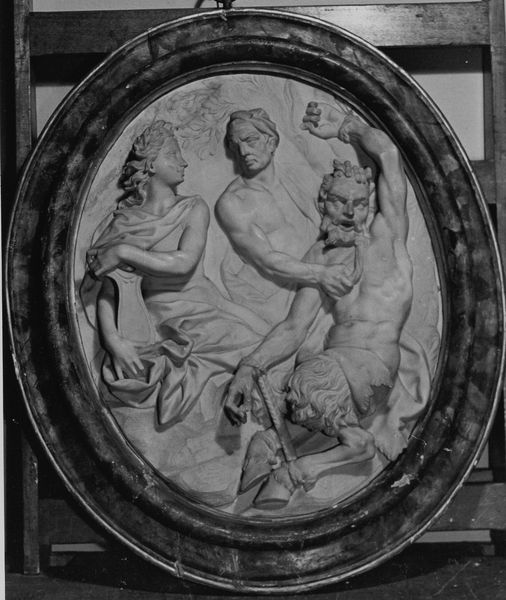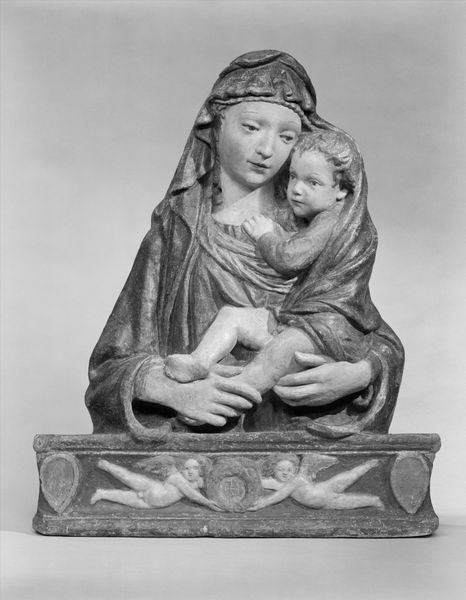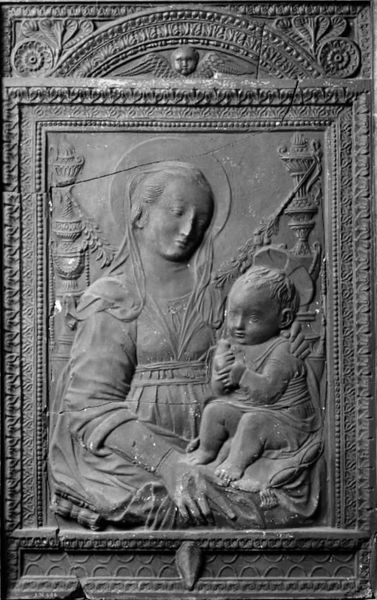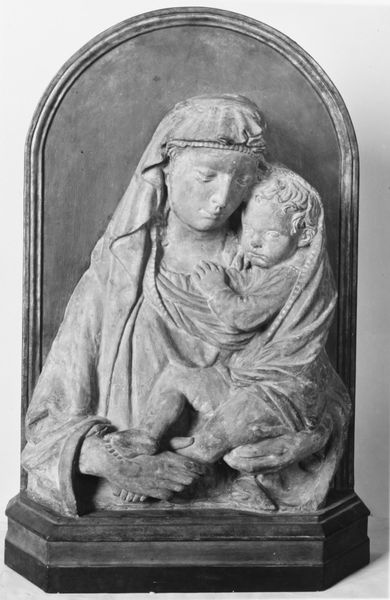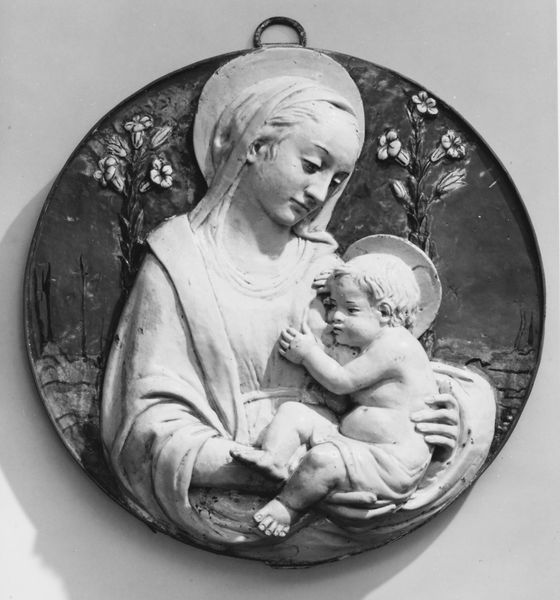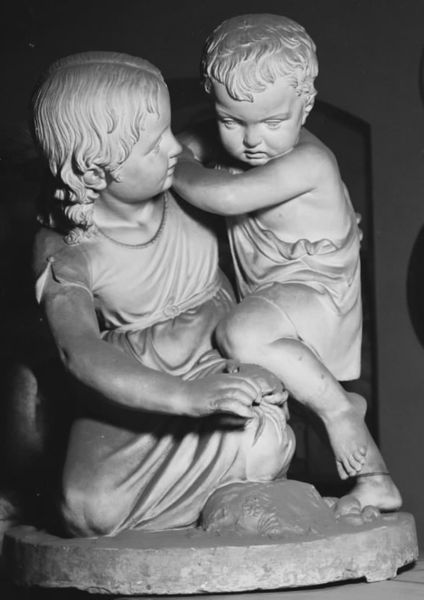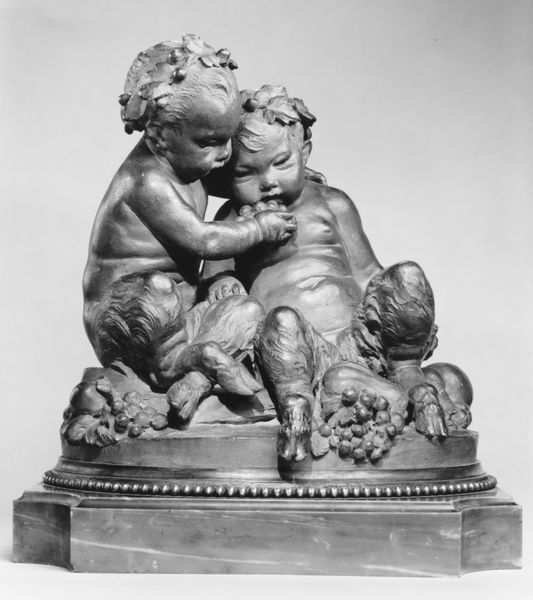
relief, sculpture, marble
#
portrait
#
sculpture
#
relief
#
classical-realism
#
figuration
#
sculpture
#
marble
#
italian-renaissance
#
early-renaissance
Dimensions: 44.9 cm (height) x 35.2 cm (width) x 13 cm (depth) (Netto)
Curator: Here we have Luca della Robbia's "The Virgin and Child," thought to have been created sometime between 1415 and 1482. It’s a marble relief sculpture currently residing here at the SMK. Editor: The stark contrast makes me feel like I'm looking at a ghost, like peering into someone's memory of faith and familial bonds. There's something hauntingly tender about it. Curator: I agree, though 'hauntingly tender' strikes me as beautifully contradictory, it's fitting. You see the smoothness, almost a porcelain quality. But let's consider the process—the artist’s labour. Chiseling marble wasn’t just art; it was industry, often commissioned to broadcast religious beliefs and reinforce social norms through its display. Editor: Absolutely, you are spot-on about labour! Thinking about where this sculpture might have lived – in a private chapel, or perhaps as part of a grand public display. That context shapes how we perceive the craftsmanship. It wasn't just an act of devotion for the artist, but a trade, a way of providing. I wonder how della Robbia approached the work: did they laboriously plan everything in advance, or leave room for the marble to "speak," letting it dictate the subtle details of Mary's gown or the baby's gesture? Curator: I picture della Robbia feeling something between divine inspiration and sheer hard work. There is something about this embrace. It transcends just maternal affection; it’s an intimate echo of classical ideals made holy. What really gets me, are these stories that remain unreadable across centuries. Was there love when this was produced, the hum of dedication, the quiet, almost inaudible conversation between an artist and his world as marble submits to an intention? Editor: That really sings. The "unreadable stories" linger in the small facture marks, or slight misalignments only reveal through careful engagement. Now, how far does such dedication and expertise remove labour, elevating craftsmanship into the ethereal concept of art, or keeping us connected to earthly creation. Curator: Perhaps the most radical thought is not trying to decide. Staying suspended, lingering on the tension between heaven and earth, artist and the materials is something to relish. Editor: Couldn't have put it better myself! Lets' try and be in that limbo in front of the painting, suspending that question.
Comments
No comments
Be the first to comment and join the conversation on the ultimate creative platform.
